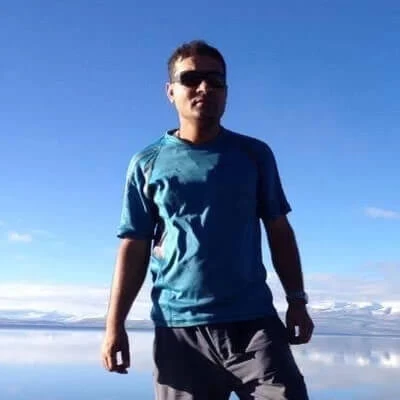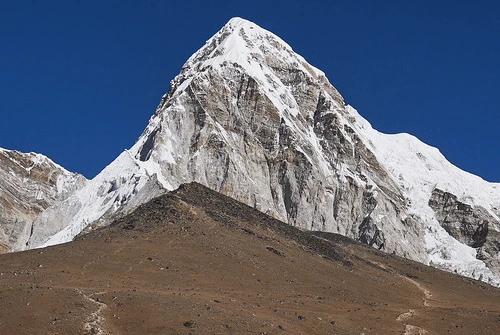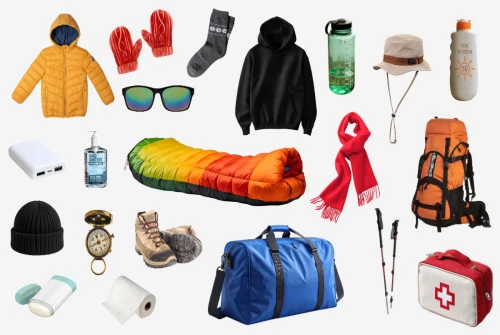Trekking in Nepal is a unique and unforgettable experience. The country's diverse landscapes, from the lowland Terai plains to the majestic peaks of the Himalayas, offer trekkers everything from cultural richness to unparalleled natural beauty. However, trekking in Nepal comes with its own set of challenges, so it’s essential to be well-prepared. Below is a comprehensive guide to ensure you have a safe and enjoyable trekking adventure in Nepal.
Essentials to know while Trekking in Nepal
With its diverse landscape, beautiful Himalayas, and serene nature, Nepal is one of the best destinations for trekking. Having some of the best trekking regions. Many trekkers visit yearly to get a glimpse of the mighty mountains. But trekking to Nepal is not as straightforward as it sounds. The trekking trails in Nepal are in some of the most remote and isolated essential parts of the country. which can be known as an overwhelming experience. So, in this article, let me take you through some of the essential things you need to know while trekking in Nepal.
Some of the Essentials to know while trekking in Nepal are,
- It is always better to have a Guide
- Altitude Sickness is a real risk
- Respect the local culture
- Know about the TIMS Card and the permits
- Don’t Overpack
- Know Your Limits
- Carry Extra Cash
It is always better to have a Guide
Most places in Nepal can be traveled independently without a guide, but there are some restricted areas where having a guide is compulsory. Unless you speak Nepali and are familiar with the trekking trails, it is always recommended to have a guide with you.
Not only can a guide show you the way and help you with your trek to make it convenient and hassle-free. They also help you know about deep insights into the people, culture, history, and places you will be visiting. In addition, when traveling to remote areas, there will be a high communication gap between you and the locals when you don’t speak Nepali. A local guide is essential for you to interact easily with the locals.
Having a guide will make your trek hassle-free, and you don’t have to be involved much in getting your permits and tickets and worry about accommodation and food, which can get hard, especially during peak season in Nepal. Also, they will know beforehand if any road gets blocked and can help you during any sickness.
Do let us know if you want a reliable guide for your trek to the Himalayas.
Altitude Sickness is a real risk
While trekking to higher altitudes, mainly in altitudes above 4000 and 5000m, Altitude sickness can get threatening. Many people don’t think altitude sickness can get them, but you will only know when it hits you. Altitude sickness can get pretty terrifying, especially when you get it on your first trek in higher altitudes. But yes, you can avoid altitude sickness or lower its chances. By acclimatizing properly, staying fueled with proper food, and being hydrated. The main cause of the sickness is the low oxygen levels in higher altitudes. Since you are used to higher oxygen levels back home, the lower oxygen levels can lead to Altitude sickness or Acute Mountain Sickness (AMS). The common symptoms include headache, fatigue, loss of appetite, nausea, dizziness, and heavy breathing. Make sure you stay hydrated and fueled. Carry medicines to help ease the early symptoms of AMS. Also, whenever you experience the symptoms, don’t climb higher; get to lower altitudes and rest properly till you feel better.
Respect the local culture
When trekking in Nepal, you can experience different unique cultures in different parts of the country. In Everest Region, you will find Sherpa settlements with their local culture; in Langtang, there are Tamang people who have Tibetan-influenced culture, and all other regions have their different cultures, which is quite intriguing to outsiders. You must respect the local people and culture when trekking in different regions. Make the most out of your trek to learn about different cultures and interact with the local people to make your trip much more memorable. Refrain from doing or wearing anything that might be disrespectful. It is better to consult with your guide, who can help you get deeper insights into the local culture of the region you are trekking in. Especially when visiting temples, and monasteries, most sites don’t allow people to take photographs, or you might even be doing other things unknowingly that might be disrespectful. Know about the culture and make sure you don’t do anything that might disrespect the local culture and the people. local kids
Know about the TIMS Card and the permits
You might need TIMS Card and different permits while trekking in Nepal. A Trekkers’ Information Management System (TIMS) Card is necessary while trekking in almost any region in Nepal. TIMS Card is essential for the safety of all trekkers in Nepal. It acts as a basic trekking permit for trekking in Nepal, and you can easily get it from Tourism Board in Kathmandu. There are also other permits you need depending on the region you are traveling to. You will need different entry passes for various national parks and conservation areas. You can contact Tourism Board to learn about the different permits you might need for your trek or consult your guide or travel agency.
Don’t Overpack
Packing can get overwhelming before trekking. You might need clarification about what you need to carry on the trek. Your packing mainly depends on where you travel, and you must pack accordingly. Consult your guide about what you might need to carry for your trek. Don’t pack unnecessary items that will just take up much space, leaving no room for the essentials. For example, regarding clothing, bring a few pieces of clothing according to the climate in the region. Besides clothing, you just want to have essential toiletries and a medical kit with you. Making your bag super heavy with all the unnecessary items will only make your trek difficult and exhausting. So, make sure you don’t overpack and also under-pack during your trek. Don’t miss out on the essential things, and avoid unnecessary items.
Know Your Limits
Trekking and climbing up to higher altitudes is something only some can do. Traveling to higher altitudes with steep slopes where you might have to climb and walk along for hours demands a lot of physical and mental strength. Some treks are more challenging than others. Always research appropriately about the region you will be traveling to. Know about the elevations and the time you will be trekking. Prepare yourself physically and mentally for your trek. While trekking, you must get out of your comfort zone and challenge your limits. But this doesn’t mean you should constantly get overboard with your limits. Set your pace according to your limit and trek accordingly. In case of discomfort or even altitude sickness, don’t push yourself hard, and ensure you know what your body is capable of. reaching the final destination
Carry Extra Cash
When trekking to remote areas, don’t expect to get digital payment methods or any ATMs. You can rely on ATMs in the city areas of Nepal, but when trekking up in the Himalayas, all you need is cash. When trekking in remote areas, the estimated budget might not always be accurate. You might end up spending higher than your budget in some areas. In that scenario, it is always better to have extra cash. Calculate roughly how much you might need for the trek. Then always carry extra cash. When you are trekking with a travel agency. they cover mostly your food and accommodation, but when you need to buy services or souvenirs, you need to pay yourself. When you trek higher, there are hardly any ATMs, so it is better to carry extra cash.
Choosing the Right Trekking Season
Best Seasons for Trekking:
Autumn (September to November): Clear skies, stable weather, and moderate temperatures make this the most popular trekking season.
Spring (March to May): Another excellent season, known for warmer temperatures and blooming rhododendrons, especially in the Annapurna region.
Avoid Monsoon (June to August): During monsoon, trails are muddy, slippery, and prone to landslides. The weather is unpredictable, making trekking difficult and unsafe.
Physical Fitness and Preparation
Trekking Difficulty: Nepal offers treks for all levels of fitness, from beginner-friendly walks to extreme high-altitude climbs. The higher the altitude, the more physically demanding the trek.
Training: Prepare by walking or hiking regularly before your trek. Cardiovascular fitness (like running, swimming, or cycling) is vital, along with leg strength (hiking uphill).
Altitude Acclimatization: Altitude sickness is a risk above 2,500 meters (8,200 feet). Always include rest days to acclimatize, drink plenty of water, and listen to your body.
Packing the Right Gear
Clothing: The weather in the mountains can vary greatly. Layers are key:
Base layer: Moisture-wicking material (avoid cotton).
Mid-layer: Fleece or lightweight down jacket.
Outer layer: Waterproof and windproof jacket.
Trekking pants and thermal wear for colder months.
Trekking boots: Well-fitted, waterproof boots with good grip are a must.
Hat and gloves: For cold weather at higher altitudes.
Essential Gear:
Sleeping bag (for trekking above 3,000 meters).
Water bottle (hydration is essential).
Headlamp/flashlight (with extra batteries).
Sunscreen and lip balm (the high-altitude sun is harsh).
First aid kit (with altitude sickness medication, pain relievers, antiseptic cream).
Trekking poles for stability on rough terrain.
Health and Safety
Altitude Sickness: Acclimatization is crucial to prevent altitude sickness. Symptoms include headaches, dizziness, nausea, and shortness of breath. If you feel any symptoms, descend to a lower altitude immediately.
Drinking Water: Tap water is not safe to drink in Nepal. Always use bottled or filtered water, or use water purification tablets when trekking.
Vaccinations: Ensure you are up-to-date with essential vaccinations like Hepatitis A, Typhoid, and Tetanus before you go. Consult a doctor for additional recommendations.
Travel Insurance: Get comprehensive travel insurance that covers trekking at high altitudes and emergency evacuations. This is essential in case of illness or injury.
Budget and Costs
Trekking Costs: Trekking in Nepal is relatively affordable compared to other destinations. However, costs will vary based on the trek, duration, and whether you are using a guide and porter.
Accommodation: Tea houses along the trekking routes are budget-friendly, ranging from $5 to $15 per night.
Food: Expect to pay about $3 to $8 for meals at tea houses.
Guides and Porters: Hiring a guide costs between $20–$30 per day, while porters cost around $15–$20 per day.
Other Costs: Permit fees, equipment rentals, and personal expenses can add up, so budget accordingly.
Communication and Connectivity
Wi-Fi and Mobile Coverage: Wi-Fi is available in many tea houses, although it can be slow. Mobile coverage is good in most trekking regions, but might be limited at higher altitudes.
Emergency Communication: In case of emergencies, satellite phones and radios are available in some trekking areas.
Weather and Terrain
Weather: The weather in the Himalayas can be unpredictable. Even in peak seasons, rain, snow, or sudden temperature drops can occur. Always be prepared for changing weather conditions.
Trekking Terrain: Trails range from easy, flat walks to steep, rocky climbs. Be mentally and physically prepared for a variety of terrains, from dense forests and rhododendron forests to rocky paths and snow-capped peaks.
Sustainable Trekking
Leave No Trace: The Himalayan environment is fragile, so it’s important to minimize your impact. Stick to marked trails, avoid littering, and respect local wildlife.
Eco-Friendly Practices: Use eco-friendly products, like biodegradable soap and reusable water bottles, and support tea houses that promote sustainable practices.
Trekking Routes and Popular Treks
Everest Base Camp (EBC): One of the most iconic treks, offering spectacular views of Mount Everest and other towering peaks.
Annapurna Circuit: A versatile trek with varied landscapes, from subtropical forests to high-altitude deserts, providing stunning views of the Annapurna range.
Langtang Valley: A more off-the-beaten-path trek with fewer crowds, showcasing beautiful landscapes and Tibetan culture.
Manaslu Circuit: A remote trek that is less crowded but offers breathtaking mountain views and cultural experiences.
Last Words
Trekking in Nepal can be overwhelming for many, with so many things to consider—what to pack, what to expect, and how to stay safe during your journey. This article has hopefully covered the essential points you need to know before setting off on your adventure. From altitude sickness awareness and the importance of hiring a guide to carrying extra cash, knowing your limits, and securing the necessary permits, these are just a few of the critical aspects to ensure a smooth trek.
If you're still unsure or need more personalized advice for your trek in Nepal, don't hesitate toContact Us!We're here to answer your questions and help you plan a safe, unforgettable experience in the Himalayas. Safe travels, and may your trek through Nepal be filled with adventure and breathtaking moments!



